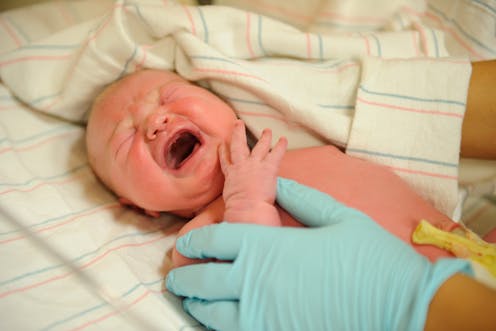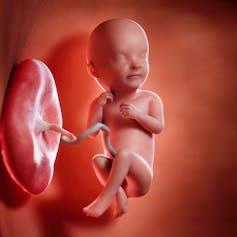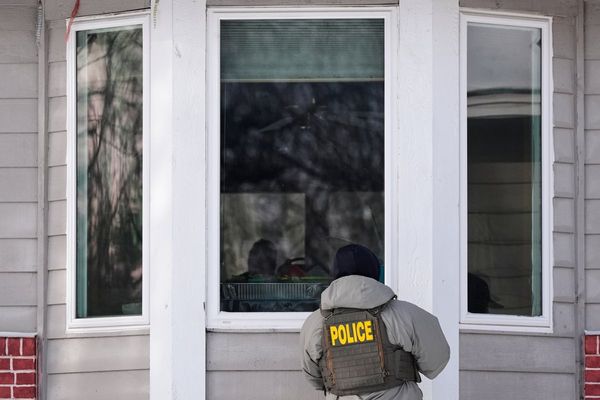
Why do babies always cry when they come out of their mum? – Nam, 12, Hanoi, Vietnam
When babies are born, they all seem to cry. We see this a lot on TV.
But not all newborn babies cry straight away. Here’s what’s going on.
What happens at birth?
When a baby is born, they move from their mum’s warm body, and out of their dark, watery world into a much cooler, drier and brighter one.
It’s a bit of a squeeze. As the baby comes out from their mum, the cooler air hits their wet skin.
The cooler air makes them gasp. They also gasp when the midwife or doctor touches their body to help them come into the world.
That gasp is their first breath, which usually comes with a cry. And when this happens the gasp or cry triggers an amazing change in how the baby gets oxygen and moves it around their body.
Read more: Curious Kids: why do we cry?
What changes?
In the womb, babies depend on their mum for oxygen – via the placenta and umbilical cord.
The placenta looks a bit like a pancake and filters oxygen-rich blood from the mum. The umbilical cord then pumps that to the unborn baby.

But once babies are born, their first breath or cry triggers a whole range of changes to the way their heart moves blood around their body. So, rather than breathing fluid from the womb, they can now breathe air and get oxygen into their lungs just like we do.
The process of being born also squeezes water out of the baby’s lungs, allowing them to work properly.
A newborn baby crying is a sound parents and health workers are very happy to hear. That’s because it usually means the baby is well and won’t need any extra help to breathe.
But not all newborn babies cry. And it’s not always something to be worried about.
Read more: Curious Kids: Is it true that male seahorses give birth?
Why don’t all babies cry?
Sometimes this switch to moving oxygen around the body just like us does not happen smoothly.
There might be problems with the baby’s heart, or there may have been a difficult birth. For instance, the baby might have been very short of oxygen in the womb and need some help to start breathing when they are born.
Sometimes there’s a delay in babies crying.
Babies born by caesarean section – when doctors operate on the mum to lift the baby out of her womb – might be slower to breathe and cry. That’s because they don’t have the fluid squeezed from the lungs like they do when born through the vagina.
Sometimes newborn babies don’t cry at all.
Babies born in water (known as a waterbirth) may have lots of warm water around them and not even realise they are born. That’s because they don’t feel cold air as they come into the world; they are often in their mother’s arms in the water. So they tend to just breathe quietly, and turn pink (showing they are getting enough oxygen), without crying.
Hello, Curious Kids! Do you have a question you’d like an expert to answer? Ask an adult to send your question to curiouskids@theconversation.edu.au
Hannah Dahlen receives funding from NHMRC and ARC. She is affiliated with The Australian College of Midwives
This article was originally published on The Conversation. Read the original article.








